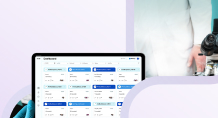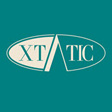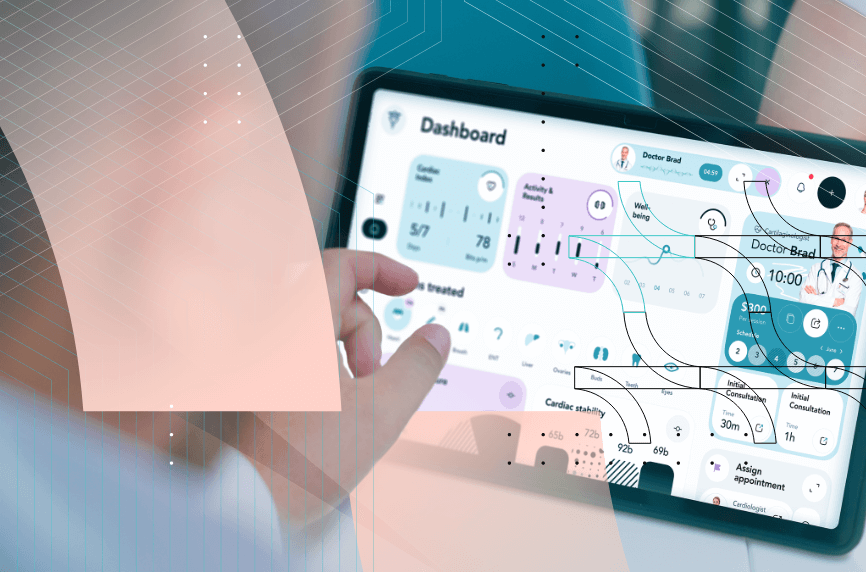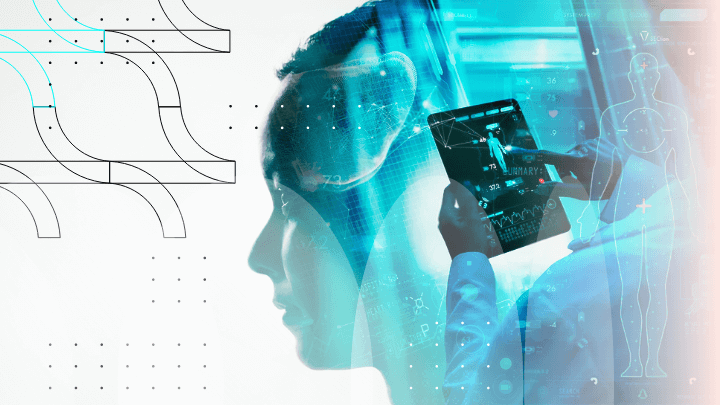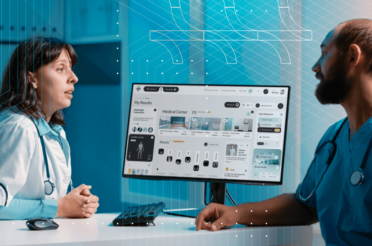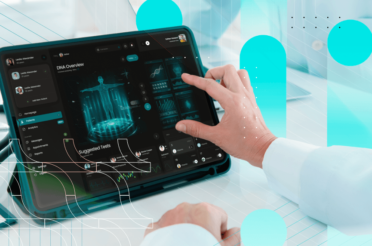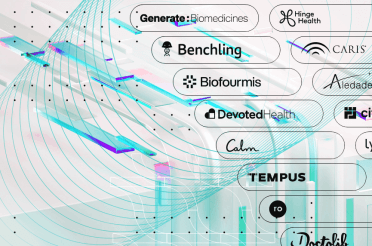Nowadays, healthcare specialists are buried in information and have difficulties making health-related decisions about their patients. This is where modern engineering and IT join forces to form clinical decisions, making support systems in order to objectively evaluate a patient’s status and reduce medication errors.
Clinical decision support systems deliver patient data reports, computerized alerts and many others, ensuring the practice of evidence-based medicine. Do they revolutionize the health and healthcare delivery?
Introduction to clinical decision support systems
A clinical decision support system (CDSS or CDS system) is a sophisticated computer-based tool founded on doctor-computer interaction. It is designed to use medical data, clinical knowledge, and analytical tools to produce patient-specific assessments or recommendations for healthcare professionals.
The system can predict risk, remind of upcoming appointments and assist in overall disease management.[1] Its accuracy is guaranteed by using various documents for acquiring information – electronic health records (EHRs) , clinical data, medical databases, algorithms such as artificial intelligence (AI), machine learning (ML), etc.
In this way, clinical decision support systems can promise strict compliance with clinical practice guidelines while enhancing patient safety, reducing mortality rates and patient-centered care. [2]
Key components and functions of CDSSs
Clinical decision support systems have components and functions to provide satisfactory end-to-end utility. They consist of various elements that interact with one another and with the system through different interfaces.
The interface is described as “a means of communicating with or accessing a component”. Think of it like a set of rules that lets different parts interact. Interfaces are clearly defined and outline what each component needs to operate properly.
There are three types:
- Requirement interface that specifies the needs for functioning of the components;
- Provision interface that describes what a component can output;
- Configuration interface that is used for adjustments of settings. [3]
All types of decision support systems consist of five components: database, model, knowledge base, graphical user interface (GUI) and a user. In CDS systems databases are the EHRs and clinical data. Model bases are the clinical guidelines, organized clinical knowledge and algorithms. Knowledge bases are medical knowledge and information, i.g. for reference value. [4]
The functionality of CDSS is undeniable. For example, here are some functions of CDS systems used in clinics for patients with pressure ulcers (PU). They can automatically propose treatment and needed interventions for the disease. They are able to choose a patient-specific approach not only for patients who already have PU but also for those in danger of developing them by determining the risk score. Some systems have simulative educational tools.
There are CDSS that generate weekly focused patient data reports. These are documents that summarize the nutrition status, incontinence, and PU history. As repositioning is a key component of the prevention of PU, some of the systems propose specific postures and frequency of moving. These functions demonstrate that CDSS facilitates practicing evidence-based medicine by the healthcare providers. [5]
The role of a CDSS in healthcare delivery
As it was described above, clinical decision support systems are built to have many functions that play a huge role in healthcare delivery. They support various areas of medical care, such as preventative health, diagnosis, therapy and monitoring.
First of all, CDSS have predictive functions. This can be used in personalized medicine to evaluate genetics, environment and lifestyle. Such a system identifies the perfect therapy for each patient as well as the best scheme to administer it, reducing the adverse events and increasing the successful treatment outcomes. Moreover, predictive analysis comes into use in clinical settings where it calculates the risk of complications and disease progression.
Another part of CDS systems is their ability for real-time data integration. Those tools access and update continuously the EHRs, lab results, monitoring systems and others. With working with the most current data, CDSS suggest real-time alerts and notifications and dynamic on-the-spot decision-making. The newest tools allow healthcare providers to simulate different scenarios and receive immediate feedback.
Last but not least, the greatest feature of CDSS is the analysis. This is one of the hardest tasks for the medical staff. Patient data is multimodal and complicated. Sometimes the diagnoses are uncertain and the lab results are misleading. In this exact moment having a system that can easily integrate different data from various places comes in handy. Advancements in AI and ML technologies are beneficial for the CDS systems so they become more and more accurate in their predictions and prepositions. [2]
Specific functions are also available. For example, CDSS can be programmed to watch out for medication alerts. It can be used to provide drug allergy checking, drug-drug interaction checking and risk for adverse drug events. If two drugs from a prescribed therapy have an interaction, a pop-up displays with an alert. Even better – the system can propose a drug change based on the patient’s needs.
Another useful matter is patient-specific reminders. An example of that is if a patient has known diabetes type 2 and is administered in the ER because of a syncope, the system will remind the healthcare provider to check their blood sugar.
Clinical support decision systems can justify their decision. They would give guideline links for further information about a disease and its clinical management. Nevertheless, all of the patient’s medical history is stored in one place. The physician can easily run a virtual health check on their patients. They have access to reminders, drug interactions, contraindications, etc. [6]
CDSSs for enhancing diagnostic accuracy
A 2020 study conducted in China found that only 6.38% on average the CDSS was incorrect about a recommended diagnosis. The lowest incorrect diagnoses were observed in the cardiology department. The total accuracy rates of the recommended diagnosis by AI-based CDSS were 75.46% about the most possible diagnosis, 83.94% in top-2 diagnosis, and 87.53% in top-3 diagnosis. [7]
Diagnostic support of CDSS is visualized in the interpretation of medical images, laboratory results, and pathology sections. It is typically explained as a computerized consultation where the machine is given the needed information to make a decision. Medical errors are usually due to burnout, poorly followed guidelines and neglect. By using CDS systems these factors are minimized. AI-powered systems are the future of accurate and comprehensive diagnostics.
One of the best features of diagnostic decision support systems is the imaging support. Systems with AI advanced pixel recognition and image classification algorithms, especially deep learning (DL). Such systems are in development for tumor detection, Alzheimer’s diagnosis through multimodal feature learning and many others.
A Stanford study shows that a CDS system exceeds the accuracy of detection of arrhythmias on electrocardiograms. For now, CDSS are not available everywhere, however in the next 20 years most of the clinical imaging is expected to be processed by a computer system.
Laboratory and pathology workups are also objects of evaluation by clinical decision support systems. They can interpret and propose other lab tests in order to reduce unnecessary interventions. CDSS can use pathology slides for tumor identification, classification and grading, e.g. for brain tumors. This can save a life if the doctor misses a sign of a malignant process. [8]
Integration with electronic health records
The integration of clinical decision support systems with electronic health records is a significant advancement in health information technology. It provides numerous benefits for improving patient care and streamlining clinical workflows. It ensures evidence-based practices and reduces medical errors. There are however certain limitations to the successful integration.
Research shows the existence of the so-called alert fatigue. This is a term for huge amounts of insignificant and inconsequential alerts. This leads to ignorance and a lack of trust in the alerts. It is recommended that they be separated into 3 tiers: a critical alert, a daily alert, and a noncritical alert. Alerts should be separated by speciality and diagnosis.
A problem with CDSS integration with EHR is the poor-quality base for tools. If the evidence supporting CDSS is inaccurate, this leads to significant deviations from the truth. Therefore, the quality of data can impact the quality of decision support.
Another possible challenge is the lack of interoperability. This is the ability of various systems to exchange and utilize data in an efficient and effective manner. This may be the result of the absence of standardized data formats among various medical record systems. The variability of data structure and different codes make it hard to integrate information.
Another difficult integration of the two systems is the one when there is no user acceptance and workflow integration. Decision support tools require specific additional steps that complicate the clinical workflow and can be a burden to healthcare professionals. Also, education and training are needed before beginning work with CDSS.
There are examples of successful integration. For instance, the Mayo Clinic developed 2017 the Statin Choice Decision Aid. This tool uses different calculators and scales to measure cardiovascular risk and to propose statin. The integration of the Statin Choice Decision Aid within EHR systems is a significant advantage of this CDS tool. It streamlines the documentation of statin therapy decisions, which enhances continuity of care and improves communication between healthcare providers.
Another good practice is the clinical decision support software for Kidney Failure Risk Equation (KFRE). It is integrated with the EHR to evaluate acute and chronic kidney disease and others. KFRE includes 4 variables from the clinical laboratory tests and is automatically calculated. As this is the most important variable in nephrology, it has enormous potential to improve patient outcomes and reduce health workers’ burden. [9]
Discover how we can help outsource Healthcare projects efficiently Speak to an expert today, and see how our on-demand IT talent and augmented teams can efficiently deliver value at every step of your roadmap.

Impact of clinical decision support systems on patient outcomes
A systematic review explored the limitations and benefits of CDS systems for patients. In two studies CDSS were diagnostic systems for cardiac ischaemia in the emergency department and reduced unnecessary care and admissions by 15%. Another one improved the time for diagnosis of acute bowel obstruction from 16 hours to 1 hour. Accurate and timely diagnostics are crucial for positive patient outcomes.
Existing CDS tools better the performance outcomes as reminder systems for prevention. They can be for screening, counseling, vaccination, testing, medication use, or identification of at-risk behaviors. It is well known that prevention is the most important part of ensuring the best possible outcome.
Systems for disease management are important for ensuring that the patients are given the best health care. For example, for diabetes care in 71% of the cases, an improvement is noted. The performance is judged by examinations of the feet, retina blood pressure, urine protein and cholesterol. A study for CDSS shows improved scores of barotrauma and organ dysfunction in mechanically ventilated patients with acute respiratory distress syndrome when CDSS-guided mechanical ventilation is used.
With improved diagnostic accuracy, enhanced treatment quality and better preventive care, CDSS is proven to be a gem for healthcare professionals. Through better coordination, increased adherence to guidelines, and enhanced patient safety, CDSS contributes to overall improved health outcomes and more efficient healthcare delivery. [10]
Challenges and limitations of clinical decision support systems
Clinical decision support systems can be a new challenge for human kind. While it improves the overall patient care and outcomes, sometimes the results are not quite as they are desired. This may be due to incorrect problem definition, poor evaluation of alternatives, or inadequate implementation. Continuous monitoring and evaluation of these systems are needed for achieving quality of care. [11]
One study shows the top 10 challenges associated with CDS systems. Some of them are problems with the interface and the presentation of the information. These include alert fatigue and disruption of workflow because of ineffective summarization of patient data. Another problem is that the user recommendations should be prioritized and filtered. This should include decisions about tolerating the recommended intervention, location in the clinician’s workflow, insurance coverage, genetic and genomic considerations, clinician’s past performance, and other factors.
Challenges for the computerized clinical decision support may be combining recommendations about the patients with a lot of co-morbidities. CDSS should present synthesized versions and fusion between many guidelines. This can be a problem for the not-so-sophisticated algorithms that are made to treat one illness at a time. Many drugs however have side effects and are not suitable with certain comorbidities. Precise evaluation and combination between guidelines, recommendations and information from the EHR are needed.
CDSS have to decide what part of the patient status they should address first – safety, chronic disease management, or prevention. Prioritization of this kind of information could be a limitation for the algorithm. Techniques and new ways to research and synthesize are critical for the development and improvement of the new CDSS. A useful strategy is to disseminate good practices from already developed CDS systems. Moreover, we need to measure effectiveness, costs and implementation to form better tools for healthcare.
While CDSS have the potential to greatly enhance healthcare delivery, addressing these challenges and limitations is crucial. It could maximize their effectiveness and ensure that they contribute positively to patient care. [12]
AI and machine learning applications in CDSS
AI has already made a difference in all of the aspects of healthcare. AI and ML significantly enhance clinical decision support systems by providing advanced analytical capabilities, predictive modeling, and personalized recommendations.
Machine learning algorithms have great capabilities. Among the various machine learning algorithms used in CDSS, Neural Networks, Decision Trees, Support Vector Machines (SVMs), Bayesian Networks, and Ensemble Learning Methods each offer distinct methodologies for data analysis and prediction. Neural Networks are modeled after the human brain. They are effective in identifying complex patterns within data.
Convolutional Neural Networks (CNNs) are a specialized type of neural network that excels in medical image analysis tasks. These are detecting abnormalities in radiological scans and identifying lesions in histopathological images. Research has shown that CNN-based CDSS can enhance diagnostic accuracy and support early disease detection on radiology imaging.
Decision Tree (DT) algorithms are another key machine learning technique. It creates a tree-like model of decision paths based on data input. This approach helps healthcare providers navigate intricate clinical scenarios and develop personalized treatment plans. Additionally, Support Vector Machines (SVMs), Bayesian Networks, and Ensemble learning methods contribute to the diverse range of machine learning techniques used in CDSS. These algorithms address various clinical challenges, including disease diagnosis, risk stratification, and treatment optimization.
Natural language processing (NLP) is an algorithm for analysis. It conducts sentimental analysis (understanding emotion in text) and entity recognition (categorization of objects). NLP can also do information extraction – retrieving structured data from unstructured text to extract vital clinical facts and treatment plans. With these features, NLP enhances the CDSS analytical ability. [13]
Legal and ethical considerations
As a potential new technology CDSSs have ethical and legal issues going with their implementation. Here are some legal problems.
First, a challenge is ensuring that clinical decision support systems align with established professional standards for healthcare providers. These standards vary by jurisdiction but generally require that providers act with a reasonable degree of skill and care. For instance, Dutch law mandates that doctors adhere to the standards of a “good healthcare provider,” while in the UK, medical professionals must meet a reasonable standard of skill and care according to their profession’s norms.
The responsibility of healthcare providers and GDPR regulations on automated decision-making. GDPR Article 22 restricts fully automated decisions that significantly affect individuals, requiring human involvement and consent.
The legal classification of software as a medical device under the EU Medical Devices Regulation of 2017 mandates that CDSS manufacturers meet stringent safety and efficacy requirements. High-risk CDSS, which could seriously impact health or lead to death, undergo thorough clinical evaluations before use.
Another problem is the product liability. CDSS suppliers should be held responsible for any defect, negligence and other function or action that is accountable for damage to a person. This means that the division of responsibility between CDSS suppliers and healthcare providers remains complex and varies by jurisdiction, creating legal debates.
In many regions in Europe, patient data could not be used for commercial purposes. This means that CDS tools should maintain the confidentiality of the medical records and compliance with data protection laws like the EU’s General Data Protection Regulation (GDPR). Data should be controlled, saved and interpreted carefully and with thought about the patient’s safety and confidentiality. [14]
Ethical dilemmas arising from the use of CDSS are not to be ignored. Here are applicable biomedical ethical principles – autonomy, justice, nonmaleficence and beneficence. AI-CDSS challenges arise when these systems must align with individual patient values. For instance, if a patient values quality of life over mere survival, they might refuse life-prolonging treatments, even if recommended by an AI-CDSS.
In such cases, there could be tension between adhering to AI recommendations and honoring patient autonomy. Then the “capability approach” is used – respecting autonomy involves considering a patient’s unique wishes and limitations, especially for older patients facing physical and cognitive challenges.
Beneficence is the practice of doing the best for the patient’s well-being. It is challenging again in situations when the quality of life might be more significant than mere functional improvements. Nonmaleficence is the practice of not causing harm. Potential ethical dilemmas arise when there are technical problems, alert fatigue or other limitations in the use of CDSS.
The concept of justice is connected to principles such as equality, need, dignity, contribution, effort, etc. There however is the bioethical success for the new technology. The literature emphasizes on positive aspects of CDSSs on justice. Some biases can be observed for older patients and others, resulting in inequity in care. This is rare but possible in the field of geriatrics. [15]
CDSS implementation and adoption strategies
Strategies for the implementation of CDSS should be found and applied. They should be tailored to fit the correct audience – users and patients. Strategies include planning – conducting research for specific user needs. They can educate and distribute educational materials. They can be useful in other aspects – to provide clinical supervision, audit, and feedback.
Strategies for the adoption and implementation of CDSS are useful for the initial trial period, as well as in the future with the development of the technology. They promise higher quality and efficiency in the increasingly overburdened health systems. [16]
Modern-day healthcare needs modern-day solutions. One of these solutions is the clinical decision support systems. They improve patient care, workload burden and overall success rates. They are enhancing health related decisions with their thoroughness and accuracy. It is important to adopt and apply this new technology along with its AI tools to deliver serviceable healthcare.
Whether you’re a startup, a Fortune 100 company or a government organisation, our team can deliver a solution that works for you. BGO Software
Sources
[1] Ji M, Genchev GZ, Huang H, Xu T, Lu H, Yu G. Evaluation Framework for Successful Artificial Intelligence-Enabled Clinical Decision Support Systems: Mixed Methods Study. J Med Internet Res. 2021 Jun 2;23(6):e25929. doi: 10.2196/25929. PMID: 34076581; PMCID: PMC8209524.
[2] Chen Z, Liang N, Zhang H, Li H, Yang Y, Zong X, Chen Y, Wang Y, Shi N. Harnessing the power of clinical decision support systems: challenges and opportunities. Open Heart. 2023 Nov 28;10(2):e002432. doi: 10.1136/openhrt-2023-002432. PMID: 38016787; PMCID: PMC10685930.
[3] Nizami S, McGregor Am C, Green JR. Integrating Physiological Data Artifacts Detection With Clinical Decision Support Systems: Observational Study. JMIR Biomed Eng. 2021 May 27;6(2):e23495. doi: 10.2196/23495. PMID: 38907382; PMCID: PMC11041468.
[4] Stefan, Ioana & Filip, f g. (2011). Emergent Frameworks for Decision Support Systems. Informatica Economica Journal. 15.
[5] Araujo SM, Sousa P, Dutra I. Clinical Decision Support Systems for Pressure Ulcer Management: Systematic Review. JMIR Med Inform. 2020 Oct 16;8(10):e21621. doi: 10.2196/21621. PMID: 33064099; PMCID: PMC7600011.
[6] Kortteisto T, Komulainen J, Mäkelä M, Kunnamo I, Kaila M. Clinical decision support must be useful, functional is not enough: a qualitative study of computer-based clinical decision support in primary care. BMC Health Serv Res. 2012 Oct 8;12:349. doi: 10.1186/1472-6963-12-349. PMID: 23039113; PMCID: PMC3508894.
[7] Tao L, Zhang C, Zeng L, Zhu S, Li N, Li W, Zhang H, Zhao Y, Zhan S, Ji H. Accuracy and Effects of Clinical Decision Support Systems Integrated With BMJ Best Practice-Aided Diagnosis: Interrupted Time Series Study. JMIR Med Inform. 2020 Jan 20;8(1):e16912. doi: 10.2196/16912. PMID: 31958069; PMCID: PMC6997922.
[8] Sutton RT, Pincock D, Baumgart DC, Sadowski DC, Fedorak RN, Kroeker KI. An overview of clinical decision support systems: benefits, risks, and strategies for success. NPJ Digit Med. 2020 Feb 6;3:17. doi: 10.1038/s41746-020-0221-y. PMID: 32047862; PMCID: PMC7005290.
[9] Mackenzie Alexiuk, Heba Elgubtan, Navdeep Tangri,
Clinical Decision Support Tools in the Electronic Medical Record,
Kidney International Reports, Volume 9, Issue 1, 2024, Pages 29-38, ISSN 2468-0249, https://doi.org/10.1016/j.ekir.2023.10.019.
[10] Garg AX, Adhikari NK, McDonald H, Rosas-Arellano MP, Devereaux PJ, Beyene J, Sam J, Haynes RB. Effects of computerized clinical decision support systems on practitioner performance and patient outcomes: a systematic review. JAMA. 2005 Mar 9;293(10):1223-38. doi: 10.1001/jama.293.10.1223. PMID: 15755945.
[11] Hak F, Guimarães T, Santos M. Towards effective clinical decision support systems: A systematic review. PLoS One. 2022 Aug 15;17(8):e0272846. doi: 10.1371/journal.pone.0272846. PMID: 35969526; PMCID: PMC9377614.
[12] Sittig DF, Wright A, Osheroff JA, Middleton B, Teich JM, Ash JS, Campbell E, Bates DW. Grand challenges in clinical decision support. J Biomed Inform. 2008 Apr;41(2):387-92. doi: 10.1016/j.jbi.2007.09.003. Epub 2007 Sep 21. PMID: 18029232; PMCID: PMC2660274.
[13] Elhaddad M, Hamam S. AI-Driven Clinical Decision Support Systems: An Ongoing Pursuit of Potential. Cureus. 2024 Apr 6;16(4):e57728. doi: 10.7759/cureus.57728. PMID: 38711724; PMCID: PMC11073764.
[14] Mitchell C, Ploem C. Legal challenges for the implementation of advanced clinical digital decision support systems in Europe. J Clin Transl Res. 2018 Aug 18;3(Suppl 3):424-430. PMID: 30873491; PMCID: PMC6412598.
[15] Artificial Intelligence–Based Clinical Decision Support Systems in Geriatrics: An Ethical Analysis
Skuban-Eiseler, Tobias et al.
Journal of the American Medical Directors Association, Volume 24, Issue 9, 1271 – 1276.e4
[16] Ackerhans S, Huynh T, Kaiser C, Schultz C. Exploring the role of professional identity in the implementation of clinical decision support systems-a narrative review. Implement Sci. 2024 Feb 12;19(1):11. doi: 10.1186/s13012-024-01339-x. PMID: 38347525; PMCID: PMC10860285.




